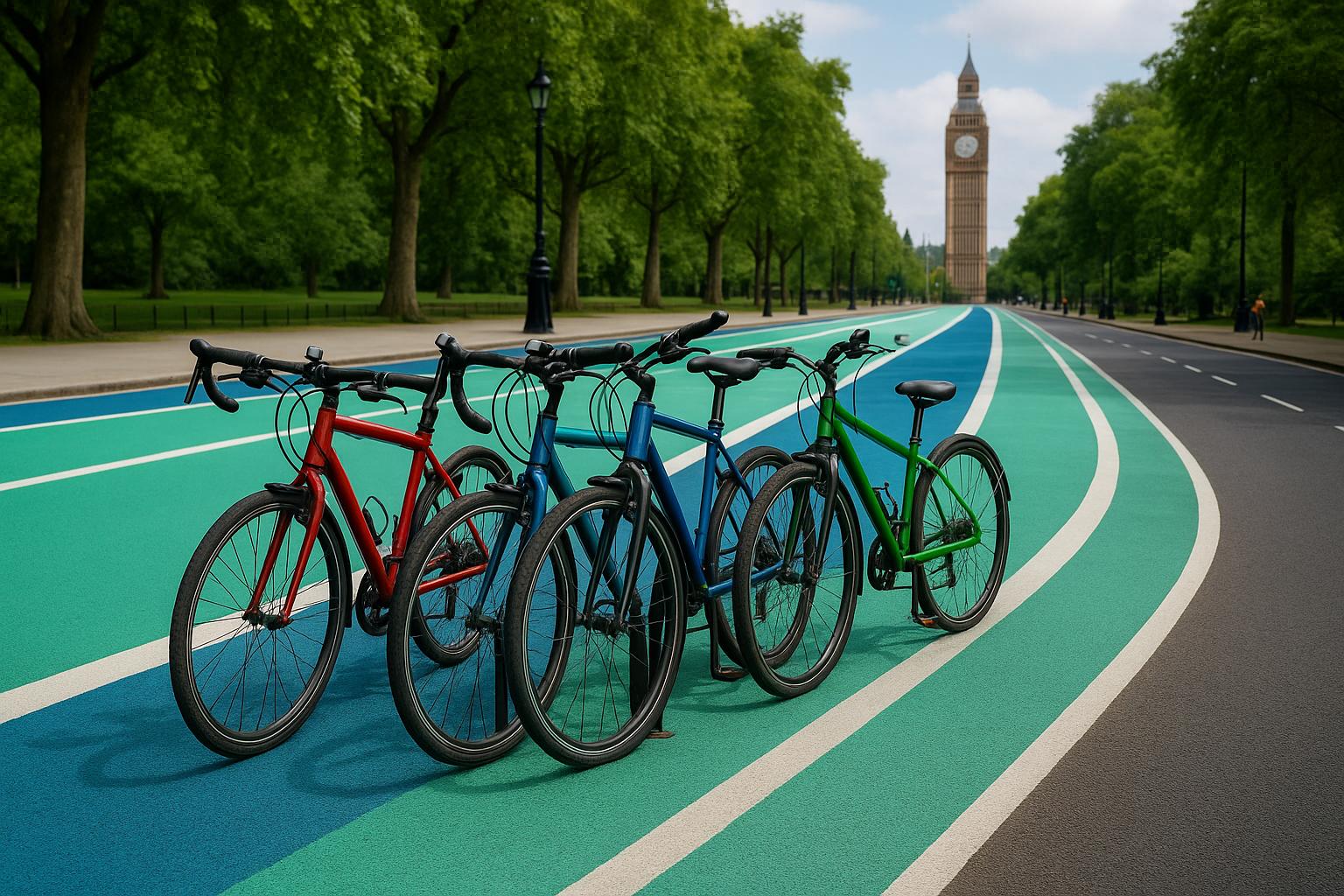Transport for London (TfL) has unveiled significant progress in active travel infrastructure within the capital, reporting 51 kilometres of new permanent cycle routes introduced between April 2024 and April 2025. This expansion forms part of a broader set of improvements funded by £80.85 million from TfL’s Local Implementation Plan, which has empowered London boroughs to deliver safer, greener, and more accessible streets.
Over the past year, borough-led projects, supported by this funding, have resulted in over 400 new pedestrian crossings, including 61 signal-controlled and 108 zebra crossings, complemented by 12 kilometres of widened footways intended to facilitate safer and more comfortable walking environments. The programme also boasts 1,673 publicly accessible cycle parking spaces, alongside 10,000 residential and 900 school cycle parking places, enhancing convenience for cyclists across the city. Additionally, cycling skills training has reached 16,631 adults and more than 51,000 children, underlining a commitment to increasing cycling confidence and safety.
Other transport enhancements include 2.8 kilometres of new bus lanes and accessibility upgrades at 64 bus stops, helping to promote public transport usage. To further improve community safety and reduce traffic levels, seven new traffic reduction schemes and 26 road closures have been implemented, with 15 experimental schemes becoming permanent fixtures. TfL also reported the installation of over 50,000 square metres of new pipes and sewers, indicating parallel investment in essential urban infrastructure.
Looking forward, TfL aims to extend these gains with a plan to deliver an additional 222 new School Streets—zones that restrict vehicle access during school run times—and up to 95 kilometres of new cycle routes by the 2027/28 financial year. Helen Cansick, TfL’s head of healthy streets investment, emphasised the growing ambition among borough officers, highlighting the tangible benefits these improvements bring to local communities, such as safer crossings and reduced traffic speeds near schools. London’s walking and cycling commissioner, Will Norman, attributed the progress to a strong collaborative ethos between TfL and boroughs, combining strategic expertise with local insights to tailor streets to community needs.
The initiative has also received positive feedback from groups like Living Streets, whose director Tanya Braun noted that concerns over traffic and lack of safe crossings have traditionally prevented parents from walking children to school. By expanding safety measures around schools and widening pavements, the programme encourages healthier, more sustainable travel choices.
These targeted local projects sit within the context of broader cycling and walking trends in London. According to the recent 'Travel in London 2024' report, daily cycling journeys increased by 26% from 2019 to 2024, with roughly 1.33 million cycle trips made daily across the capital. Overall, active travel modes constitute 63.7% of all journeys in London, reflecting a steady upward trend in sustainable transport use.
The City of London Corporation similarly documented a remarkable rise in cycling within the Square Mile, with daily cyclist numbers climbing to 139,000 in October 2024—an increase of more than 50% since 2022. This surge coincides with a rise in pedestrian and cyclist presence during peak travel times, where walking, wheeling, and cycling now make up 85% of observed trips.
Since Mayor Sadiq Khan's tenure began in 2016, London’s ambition to become the world’s premier big cycling city has seen major expansions in cycleways, surpassing 400 kilometres in total length. This growth has brought cycle routes within 400 metres of 27% of Londoners’ homes and resulted in a 20% increase in daily cycling trips since 2019. The comprehensive approach combining infrastructure investment, safety initiatives, and community engagement is transforming London’s streets into more equitable, greener environments for all users.
Taken together, these developments underscore a city in active transition, pursuing safer, more efficient, and environmentally friendly travel options through sustained funding, strategic collaboration, and a clear vision for healthier urban life.
📌 Reference Map:
- Paragraph 1 – [1] Highways Magazine, [2] TfL Newsroom
- Paragraph 2 – [1] Highways Magazine
- Paragraph 3 – [1] Highways Magazine
- Paragraph 4 – [1] Highways Magazine
- Paragraph 5 – [1] Highways Magazine
- Paragraph 6 – [1] Highways Magazine
- Paragraph 7 – [1] Highways Magazine, [5] Travel in London 2024 Report
- Paragraph 8 – [4] City of London News
- Paragraph 9 – [5] Travel in London 2024 Report, [7] Time Out London
- Paragraph 10 – [6] Mayor of London Transport Page, [7] Time Out London
Source: Noah Wire Services
